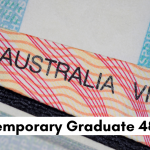The latest research from the Australian International Directors’ Forum has demonstrated that universal alumni from Australian foundations are changing into all day work at comparable rates to Australian local students.
WHAT WAS THE STUDY?
The examination was focussed on universal graduates who finished their investigations in Australia in 2012 and 2014. The profile of respondents was by and large illustrative of worldwide understudy enrolment in Australia. Respondents spoke to 143 nationalities with the 10 biggest source nations spoke to just shy of 66% of the specimen. These nations were: Malaysia, China, Singapore, Indonesia, India, Vietnam, Hong Kong, USA, Pakistan, and Canada.
These graduates additionally demonstrated elevated amounts of fulfillment towards their Australian examinations, with 81 for each penny expressing their degree was justified regardless of the monetary venture.
[ads2]
ARE STUDENTS FINDING EMPLOYMENT?
The report uncovered that 79% of students were in all day work three years after they graduated, 4% were independently employed and 6% were contemplating. This information depended on the 2012 graduating class. Just 4 for each penny of respondents announced being jobless and looking for all day work. By examination, 3.4 for every penny of four-year certification graduates in the Australian workforce were jobless in May 2015.
“At the point when contrasted and comparable reviews for household students, the outcomes show that graduate work patterns for global graduates are practically identical with their local associates,” said Carmel Murphy, AUIDF delegate and Executive Director (International) at the University of Melbourne.
The information likewise demonstrated that discovering all day work can set aside time for both household and universal students. At the season of the examination, of the 2014 class 67 for every penny of respondents were in all day work, 3 for each penny were independently employed and 8 for each penny were considering. 10 for every penny were jobless and searching for work. As per the Australian Graduate Survey (2015), 11.3 for each penny of (basically) Australian residential alumni of four-year certifications were all the while searching for work around four months after the culmination of their examinations in 2014.
Read More: Changes for Students and Job Seekers in the Year 2018 in Australia

WHAT ARE THEY EARNING?
By and large, alumni of Australian colleges who come back to their nation of origin are winning higher pay rates than the normal nearby pay. Alumni from 2012 revealed a normal yearly pay of AU$54,000; though respondents who graduated in 2014 were gaining AU$42,000. Compensation go was exceptionally subject to the area, running from AU$92,000 in Norway to $8,200 in Bhutan.
“Despite the fact that the change from concentrate to work can be a relentless procedure, the dominant part of worldwide graduates revealed advancing rapidly in their professions and higher earnings than the normal neighborhood pay rates in their nations of origin,” emphasized Phil Honeywood, CEO from IEAA.
[ads1]
WHAT INDUSTRIES ARE THEY WORKING IN?
Half of the utilized respondents worked in four divisions: Education and Training, Finance and Insurance Services, Health Care and Social Assistance, Professional, Scientific and Technical Services. A further 6 for every penny were working in Media and broadcast communications.
Read More: The Ultimate Job Guide For International Students in Australia
WHERE ARE THEY LIVING?
The dominant part of global alumni from Australian colleges come back to their nation of origin following graduation. Of the 2014 class, just shy of 50 for every penny had come back to their nation of origin at the season of the investigation, while 43 for every penny stayed in Australia. A further 4 for every penny had moved to a third nation. Alumni from China, India, and Pakistan will probably remain in Australia, while moves on from Indonesia, Singapore, Vietnam, and Malaysia will probably return home.

DID THEY USE UNIVERSITY CAREER SERVICES?
Over the example, 40 for each penny of graduates announced utilizing their college vocation administrations. This shifted crosswise over nationalities, running from 62 for each penny for Indian students to 15 for each penny for Canadian students. Graduates will probably utilize vocation administrations in the event that they remained in Australia (56 for every penny). The most usually utilized administrations were CV composing workshops (63 for each penny), profession fairs (54 for every penny) and ‘drop in’ exhortation administrations (36 for every penny). By and large, 70 for each penny of graduates who utilized profession administrations were happy with their college’s coordinated effort with businesses.
Read Further: Done with Graduation from Australia? Here’s what to do next











